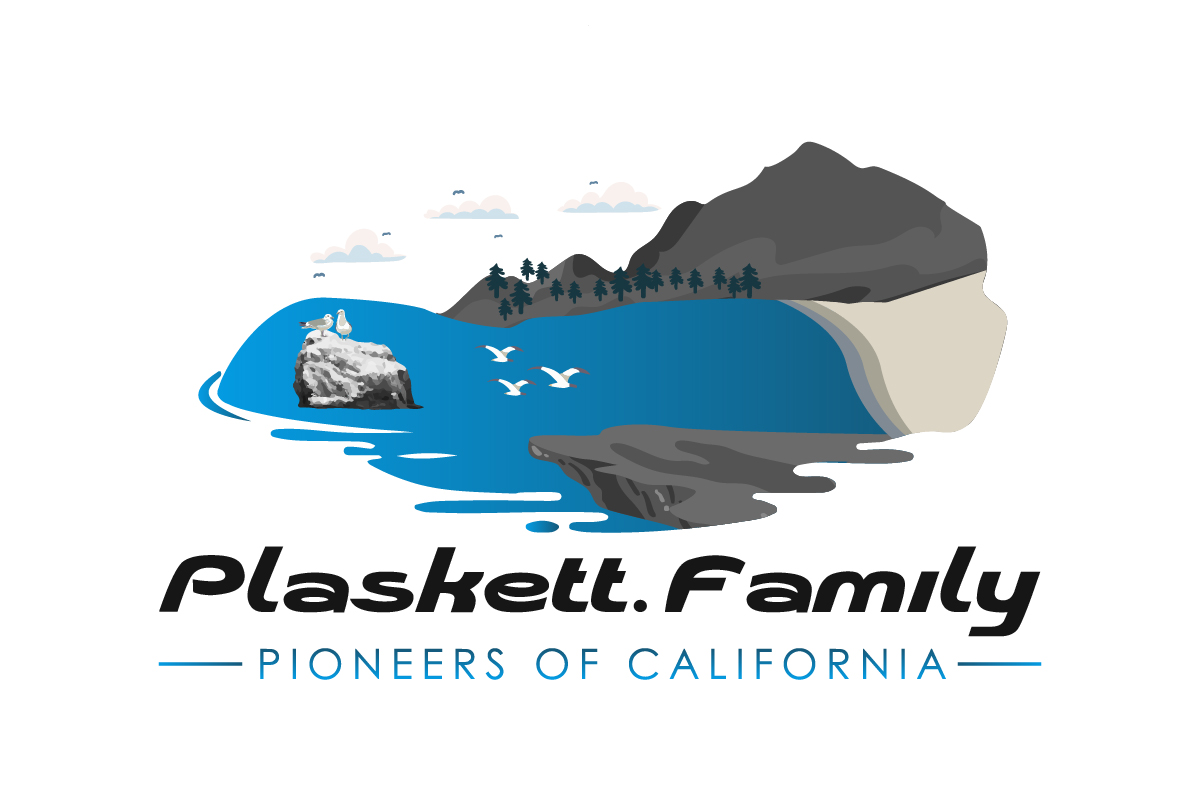Pt. Piedras Lighthouse Keeps Coast Shippers on Course
By Mabel Plaskett
Although shipping along the California Coast was somewhat restrictive in early times, on account of the Spanish embargo prohibiting foreign imports into her possessions, a good deal of smuggling went on along the central California coast as early as 1803. After California became a U. S. Territory trade flourished and ship wrecks along the coast increased. In 1872 the Pacific Lighthouse Board authorized a lighthouse at Pt. Piedras Blancas (white rocks).
The lighthouse stood completed in 1875 with Capt. L. V. Thorndyke the keeper for the first thirty years. His son L. V. Thorndyke Jr. was born in the Lighthouse.
At that time supplies were brought to the station by a lighthouse tender once a year from San Francisco. Other products were supplied by neighboring ranchers. Originally the tower stood 150 ft. high restling on a 34 foot base. The light was fitted with large prisms cut and polished in France. A Fresnel Kerosine Vapor lamp with five wicks provided the light for the reflector which could be seen as far out as 26 miles at sea from the mast of a sailing vessel on a clear night. The light flashed every 15 seconds. A clock mechanism with cabled weights suspended from a crane was used.
The lighthouse keeper cranked the drum every hour to rewind the weights and in the evening the weights were readjusted to regulate the timing of the rotation.
In 1949 an earthquake damaged the housing and the old lamp was removed and now is on exhibition at the Veterans Memorial building in Cambria.
It was replaced with a 36-inch double drum airway type of beacon generating 2,000,000 candle power of light.
THE ORIGINAL LIGHT tower with is special staircase is still in use, but four modern family homes built of concrete blocks in 1960 replace the three family apartment house and the single dwelling which originally housed the lighthouse personnel.
Unlike the Pt. Sur station this lighthouse is built on level land. Pt. Piedras Blancas forms a beautiful bay to the south where the blue Pacific glistens on a clear day or breaks angrily over the rocks in a storm. San Simeon is six miles to the south. The present officer in charge at Piedras Blancas is A. D. Garrison who is assisted by seaman Robert Hamre, engineer Dean Hensel and seaman William Dupont.
Only married men are eligible for lighthouse duty the average tour of duty being 18 months. Mr. and Mrs. Garrison have three children, Ralph, Deanna and Sherry all attend school in Cambria. They are 11, 10 and 7 years of age. The Hensels send their two girls Kathy, 11 and Judy, 13 to Cambria also. Debby and Dean Hamre and Kim Dupont are too young to send.
Garrison says the work progresses very well at this station, that he has a “terrible crew” who are most cooperative. He is a seasoned lighthouse officer having spent a year at Sentinel Island with no time off. His favorite station at The Farralones off the Golden Gate where he spent 16 months.
THE LIGHTHOUSE wives shop twice a month at Vandenburg Air Force Base, all go in one car and make a big day of it. As at Pt. Sur, the men have one night off a week and one week-end off a month.
Visitors are welcome from 1 to 3 on week days, 1 to 4 on weekends and holidays. Since 1939 the lighthouse has been under the jurisdiction of the U. S. Coast Guard.
Organizations such as Boy Scouts of America and Camp Fire Girls are welcome and enjoy climbing the spiral stair case. The tower is 74 feet high, the light 142 feet above sea level. The great white rock for which the point was named lies just off shore. Here, then, abide these “guardians of the light” true to their charge as long as need is there.
NIGHT AT SEA
By Eric Barker
Magic is more than it seems
Clear weather is the night wise sign
When the ship’s keep ploughs the mythology of the sky
And the Dog has a salty bark
Strike midnight—all is well,
Though the Bull’s Eye has a watery glean
And Orion hunts with the sharks
The dim and restless Seven”.
Mabel Sans Plaskett was born in Coralitas near Ben Lomond in the Santa Cruz Mountain area of California. Her father Edward Robert Sans ran a saw mill near Pacific Valley, along the Nacimiento - Ferguson road to the coast at Highway One. It was there she met Edward Abbott Plaskett, her husband. Mabel wrote about the coast and the pioneers of the 19th and 20th Centuries.

Recent Comments